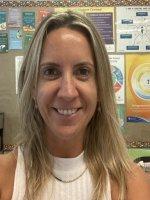








Purpose and Objectives
Through participating in the presentation of the project “Bringing to Life Our Roots”, the audience will witness how capable children are of collaborating and innovating by redefining learning with technology. The participants will show how empowered learners they are by taking ownership of their actions while creating their project. While children take part in the process of constructing the product “AR Map” they will develop thinking, social, communication, research and self-management skills.
The project “Bringing to Life Our Roots” came up from a need identified by teachers in our school. The lack of resources in English for children to explore and inquire, regarding the topic of the Indigenous People of our country, is a roadblock that prevents collaboration and ownership on their learning. Nowadays, children learn from using black and white photocopies and teachers delivering information.
Based on the absence of materials and demotivation of children, is where we noticed that technology has a huge role. By developing the ISTE standards of “Empowered Learner”, `”Knowledge Constructor” and “Creative Communicator”, a group of children will create an augmented reality map with interactive information for children of 7-8 years old to learn from. Moreover, it will support removing barriers of learning due to having visual and audible access.
A valuable aspect of this resource is that teachers and/or children from all over the world can replicate this model by just changing the content.
The presenters are experienced teachers and technology integrators, who are keen on integrating technology to redefine learning. On the other hand, children are young risk takers willing to contribute to the learning process of their peers.
Content and activities:
a) Presenters will make a presentation of the process of building their AR map, supported by a presentation/video. Each student will show a different part of the process.
b) After that they will disclose the finished map on the board, and will invite attendees to use a tablet (provided) or their own devices to be able to interact with the finished map. They will be able to play videos, listen to narrations and/or interact with 3D objects.
c) Closure: Students will engage the audience in a simple VTR (visual thinking routine) to obtain feedback.
Time: we expect the presentation to take about 10-15 minutes, and then 5 to 10 minutes for trying out the map. Closure (VTR) 10 minutes.
Quintero J, Baldiris S, Rubira R, Cerón J and Velez G (2019) Augmented Reality in Educational Inclusion. A Systematic Review on the Last Decade. Front. Psychol. 10:1835. doi: 10.3389/fpsyg.2019.01835
Yildiz, E. P. (2021). Augmented Reality Research and Applications in Education. In (Ed.), Augmented Reality and Its Application. IntechOpen. https://doi.org/10.5772/intechopen.99356
How Augmented Reality Can Give Us Superpowers
https://www.ted.com/talks/how_augmented_reality_can_give_us_superpowers?utm_campaign=tedspread&utm_medium=referral&utm_source=tedcomshare
Augmented Reality and the Future of Learning and Business
https://www.ted.com/talks/david_rapien_augmented_reality_and_the_future_of_learning_and_business?utm_campaign=tedspread&utm_medium=referral&utm_source=tedcomshare